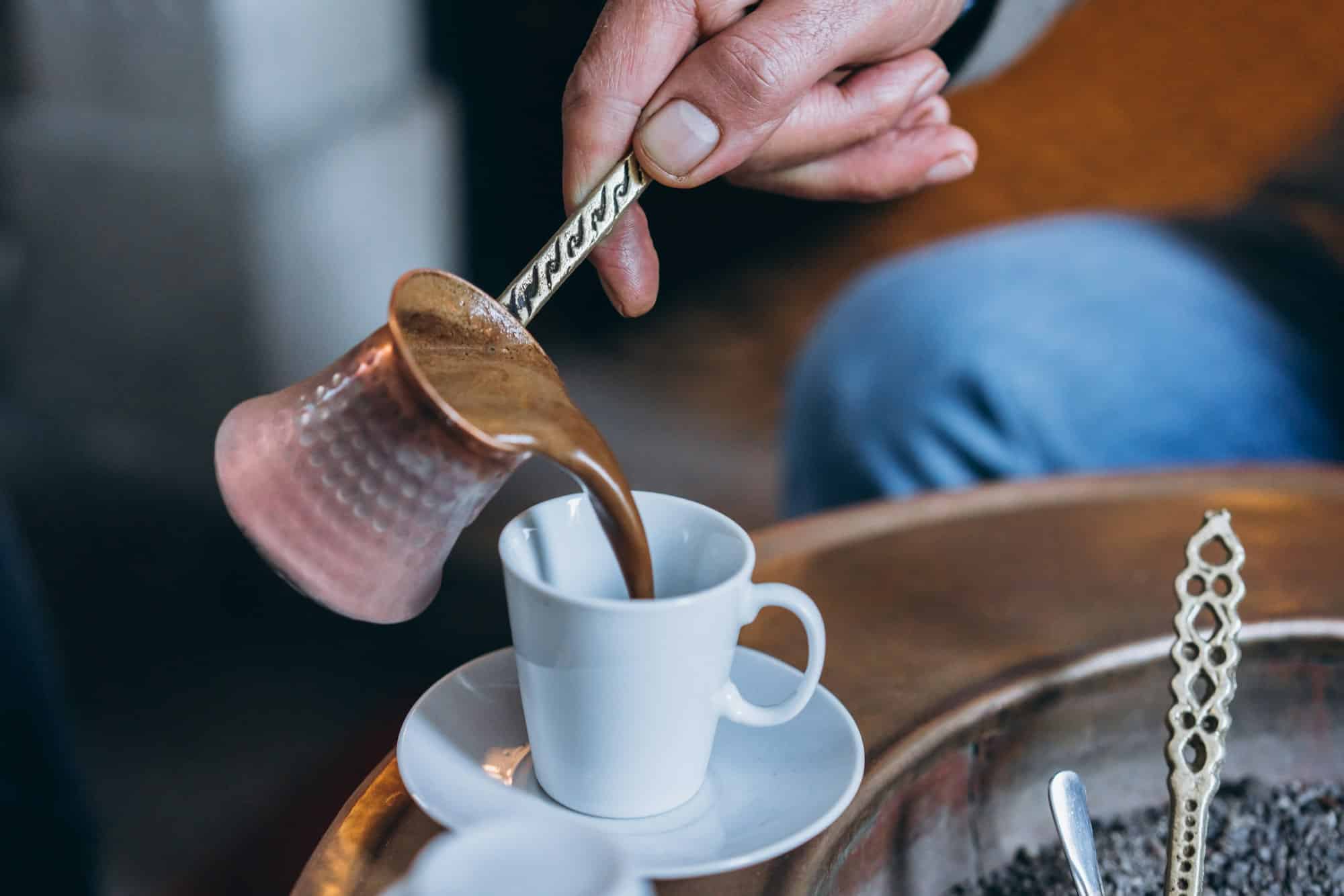What’s the Best Way to Brew a Rich Turkish Coffee with Cardamom?

There is something captivating about the act of brewing coffee. The aroma, the ritual, and the taste all combine to create an experience that is as enriching as it is comforting. Although there are numerous ways to make coffee, one method in particular stands out for its ability to produce a rich, profound flavour: brewing Turkish coffee with cardamom. This article will guide you step-by-step through the process, providing you with the knowledge to make the perfect cup of Turkish coffee at home.
Understanding Turkish Coffee
Before we delve into the brewing process, it’s essential to understand what makes Turkish coffee distinct. Unlike the drip or espresso methods popular in the West, Turkish coffee is a brewing method that has been perfected over hundreds of years in Middle Eastern and Southeastern European cultures.
En parallèle : Can You Bake a Gourmet Lemon Lavender Pound Cake with Lemon Glaze?
Turkish coffee refers to a method of preparation, not a kind of bean. Finely ground coffee beans are simmered in a pot, traditionally made of copper or brass, and served in a cup where the grounds are allowed to settle. The result is a thick, strong cup of coffee with a dense layer of foam on top. It’s a coffee experience like no other.
The addition of cardamom, a popular aromatic spice, enhances the already rich taste of Turkish coffee. Traditionally, the cardamom is added to the coffee while it’s being ground, infusing the coffee with its unique flavour during the brewing process.
A voir aussi : How to Prepare a Classic Spanish Gazpacho with Authentic Andalusian Techniques?
The Coffee and the Pot
To brew Turkish coffee with cardamom, the two most important elements you will need are the coffee itself and the pot, also known as a cezve or ibrik.
Turkish coffee requires a much finer grind than most other coffee brewing methods. The coffee should have a consistency similar to flour. Most coffee suppliers will offer a Turkish grind, or you can grind the beans yourself using a burr grinder.
As for the pot, a traditional Turkish coffee pot is small, with a wide bottom, a narrow neck, and a long handle. This unique design helps the coffee to froth up before boiling, which is crucial for Turkish coffee. Copper pots are the most traditional and are said to produce the best flavour, but stainless steel pots can also be used.
The Brewing Process
Now that we have understood the basics of Turkish coffee and have the necessary tools at hand, let’s move on to the brewing process. It isn’t complicated, but it does require careful attention.
First, measure out the water using the coffee cup you will be drinking from, not the pot. This ensures the perfect coffee-to-water ratio. Pour the water into the pot.
Next, add your coffee to the water. Do not stir it just yet. For each cup of water, use one heaping teaspoon of coffee. If you like your coffee extra strong, add more.
Now, it’s time to add the cardamom. One or two pods should be enough for one cup of coffee, but you can adjust this to your taste. Crush the pods lightly to release their flavour before adding them to the pot.
Cooking the Coffee
The next step is to heat the coffee. Place the pot on low heat and start stirring. It’s important to stir constantly and not let the coffee come to a boil too quickly.
As the coffee heats, it will start to froth. Let it rise, but not boil over. Once it froths, remove the pot from the heat, let the froth recede, and then return it to the heat. Repeat this process two or three times. This is what gives Turkish coffee its distinctive layer of foam.
Finally, after the last froth rise, pour the coffee slowly into your cup, making sure to evenly distribute the froth. Then, let it sit for a couple of minutes to allow the grounds to settle before you start sipping.
Enjoying Your Turkish Coffee
The last step, of course, is to savour your homemade Turkish coffee with cardamom. The taste is rich, complex, and unlike any other type of coffee. You’ll notice the flavor of the coffee itself, enhanced by the unique, slightly spicy flavor of cardamom.
Remember, Turkish coffee is typically served strong, so it may take some time to get used to the taste. But once you do, it’s hard to go back to any other kind of coffee. The entire process, from grinding the beans to sipping the finished product, is deeply contemplative and soothing.
And there you have it: the best way to brew a rich Turkish coffee with cardamom. It’s a method steeped in tradition, delivering a coffee experience that’s both unique and rewarding. So why not give it a try? You may just find your new favourite way to enjoy coffee.
The Perfect Pair: Turkish Coffee and Cardamom
To truly appreciate the splendor of Turkish coffee with cardamom, it’s worth understanding why these two elements pair so well together.
Turkish coffee, as previously described, is a method of brewing coffee that results in a unique, robust cup with a thick layer of foam at the top. Its strength and depth of flavor are in part due to the fine grind of the coffee used and the specific brewing process, but it’s also a result of the coffee beans themselves. Turkish coffee traditionally uses Arabica beans, prized for their superior taste and lower caffeine content compared to other varieties.
Arabica beans, when ground to a fine consistency, produce a coffee that’s rich, slightly sweet, and complex. However, when brewed Turkish style, with the coffee grounds allowed to settle in the cup, the result is a coffee that’s intense, full-bodied, and captivatingly aromatic.
Cardamom on the other hand, is a spice with a unique flavor that’s hard to describe. It’s simultaneously sweet, spicy, and slightly citrusy. In Middle Eastern cultures, cardamom is often used in sweet dishes, but it’s also found its way into coffee. When added to Turkish coffee, cardamom acts as a flavor enhancer, introducing a new layer of complexity to the coffee, and balancing its intensity with its unique spiced sweetness.
The combination of these two powerhouses gives you a cup of coffee that’s rich, aromatic, and satisfyingly complex. The addition of cardamom to Turkish coffee isn’t just a flavor pairing but a cultural tradition that adds an extra dimension to the coffee drinking experience.
The Role of Sugar in Turkish Coffee
While traditional Turkish coffee is made without sugar, many people prefer to sweeten their brew. The decision to add sugar to Turkish coffee is made prior to brewing, not after. If you prefer your coffee sweet, add sugar to the pot along with the coffee and cardamom.
The amount of sugar added can vary depending on personal preference, but a general guideline is to add one to two teaspoons per cup of water. Remember, Turkish coffee is intended to be strong and robust. Adding too much sugar can overpower the complex flavors of the coffee and cardamom.
Once you’ve added the sugar, stir the mixture over low heat until the sugar is fully dissolved. Then, continue with the brewing process as previously described. The result will be a sweet, aromatic cup of coffee that’s as comforting as it is invigorating.
Conclusion
In conclusion, brewing a perfect cup of Turkish coffee with cardamom at home is an art that requires attention, patience, and a deep appreciation for the process. From understanding the unique characteristics of Turkish coffee to appreciating the complex pairing of coffee and cardamom, each step in the brewing process is crucial to achieving the thick, frothy, aromatic cup of coffee that is synonymous with this centuries-old tradition.
Moreover, the act of preparing Turkish coffee with cardamom is not merely about the end product. It’s a ritual, a moment of calm in the busyness of life. It’s about taking time to slow down, to savor each sip, and to enjoy the rich, complex flavors that this unique brewing method produces.
Whether you’re a seasoned coffee connoisseur or a curious newcomer, the adventure of brewing and enjoying Turkish coffee with cardamom is one you don’t want to miss. So why not embrace this time-honored tradition? After all, the best cup of coffee is not just about taste. It’s about the experience and the memories that each cup brings.
